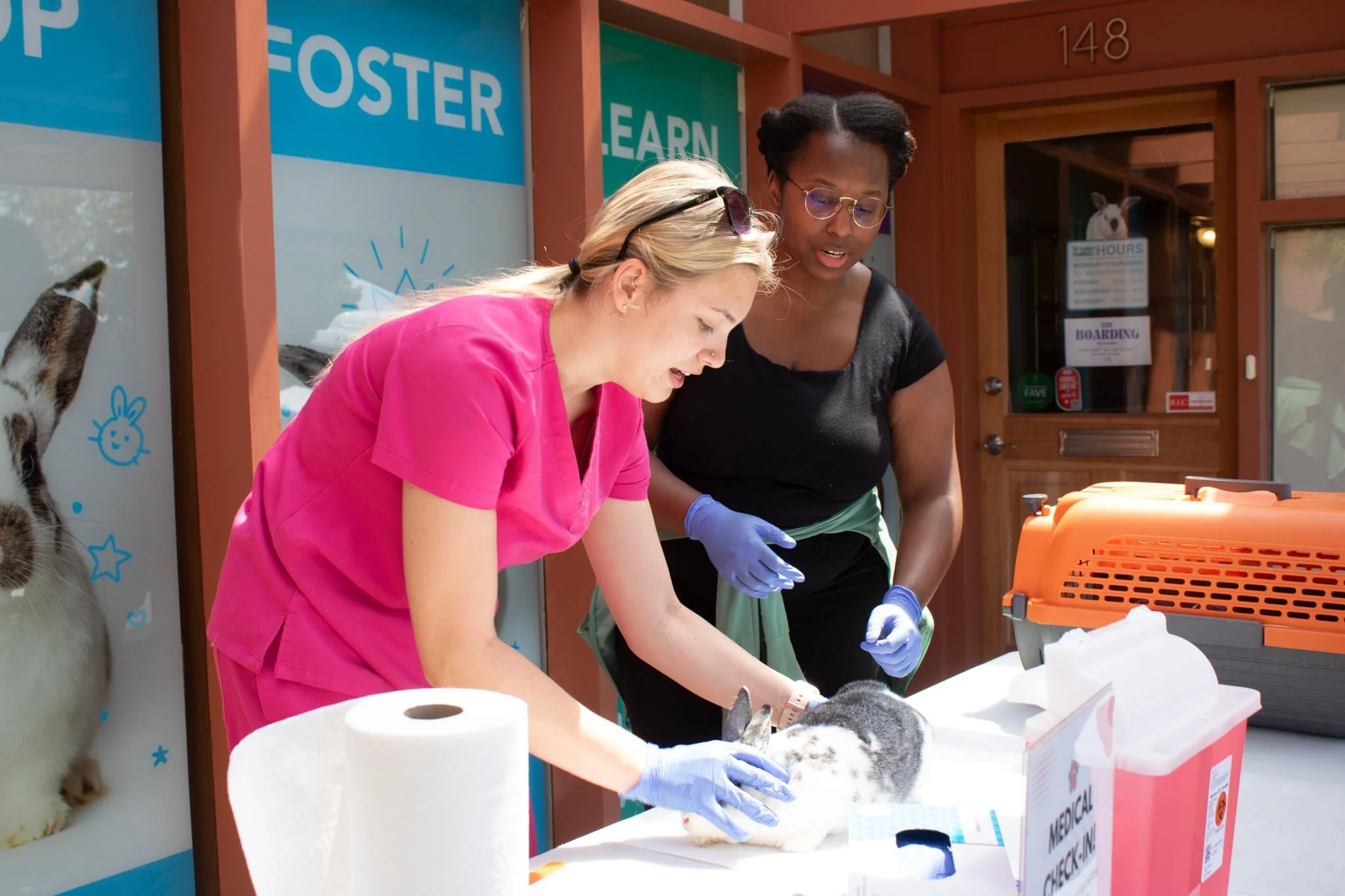
Myxomatosis
Dr. Hilary Stern is the founder and owner of the Exotic Pet Clinic of Santa Cruz, the county’s first animal hospital devoted exclusively to the care of exotic pets. What follows is a Q and A with her about the deadly virus Myxomatosis, first published in the House Rabbit Journal. Dr. Stern has done significant work tracking and educating on the virus to better prepare rabbit owners, veterinary clinics and animal shelters for signs of illness and prevention.
What is myxomatosis, and how can rabbits contract it?
Myxomatosis is a viral disease that affects European rabbits (Oryctolagus cuniculus), the species of rabbit commonly kept as pets. It is caused by the myxoma virus, an organism naturally carried by cottontail rabbit species in the genus Silvilagus. Pet rabbits most commonly contract myxomatosis when they are bitten by a mosquito that previously fed on a cottontail rabbit. They can also become infected due to direct contact with an infected rabbit, or due to contact with inanimate objects (fomites) that an infected rabbit touched.
What are the signs of myxomatosis in North America (California myxomatosis)?
The strains of myxomatosis present in the United States cause swelling (edema) of the eyelids and genitals, lethargy, and fever. If rabbits survive this initial phase of the disease their lips, nose, and ears can also become swollen, and they can develop difficulty breathing. In some cases the first sign of infection is sudden death.
Where and when does myxomatosis occur in North America?
California myxomatosis can occur wherever the carrier cottontail known as the brush rabbit (Sylvilagus bachmani) is present. The brush rabbit’s habitat extends from the Columbia River in Oregon to the north, the Sierra Nevada and Cascade mountains to the east, and the tip of the Baja California peninsula to the south. Infections are most common in pet rabbits who spend time outdoors in areas where mosquitoes and cottontail rabbits are present. Outbreaks of myxomatosis are most common in the later summer and fall but can occur year round.
How is myxomatosis similar or different to RHDV2?
Myxomatosis and Rabbit Hemorrhagic Disease (RHD) are similar in that they are both viral diseases carried by wild rabbits that can cause fever and death in pet rabbits, but the diseases differ in some important ways. Myxomatosis only occurs along the west coast of California and Oregon and in Baja California, whereas RHD occurs in most of the U.S. and in Mexico.
Myxomatosis is more deadly than RHD, with a mortality rate of almost 100%, while RHD has a 75% mortality rate in unvaccinated rabbits. Myxomatosis results in swelling of the eyelids and genitals, which is not noted with RHD. And we have an effective vaccine against RHD in the U.S., which is not true for myxomatosis.
What precautions can someone take to protect their rabbit from myxomatosis?
There are currently no vaccines against myxomatosis available in the U.S. An effective vaccine is available in Europe, but to date the USDA has not allowed it to be imported.
The best protection against myxomatosis is to keep your rabbit indoors and behind mosquito screens. If this is not possible then outdoor rabbits should be kept behind mosquito netting.
Reference
Stern H, et. Al. Epidemiologic, clinicopathologic, and diagnostic findings in pet rabbits with myxomatosis caused by the California MSW strain of myxoma virus: 11 cases (2022-2023). Journal of the American Veterinary Medical Association, 2024. https://doi.org/10.2460/javma.24.02.0139

